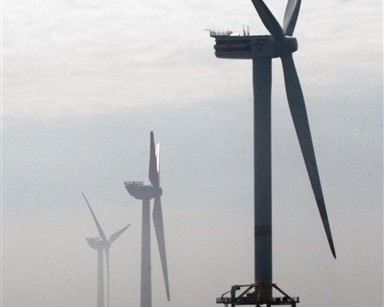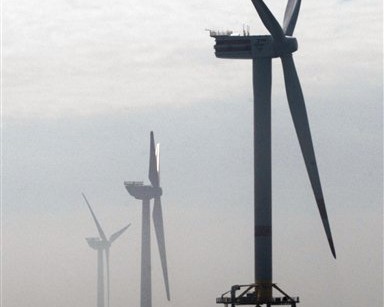
President Barack Obama could not have been clearer about the urgency of now: “For the sake of our children and our future, we must do more to combat climate change,” he said in his State of the Union address. He issued a call to action—and a threat: “I urge this Congress to pursue a bipartisan, market-based solution to climate change…But if Congress won’t act soon…I will.”
Fighting words. But in the face of Republican opposition to everything— and the $150 million fossil-fuel companies pumped into the last election—the president shows no sign of turning those words into deeds. On March 1, his State Department issued a report that could pave the way for approval of the Keystone XL pipeline.
“Whatever environmentalists may hope,” Harvard’s Theda Skocpol predicted in a report before the address, “the Obama White House and Congressional Democrats are unlikely to make global warming a top issue in 2013.”
The U.S. suffers from climate-denial disorder. Fortunately, it hasn’t gone viral—or global. Osha Gray Davidson’s refreshing Clean Break: The Story of Germany’s Energy Transformation and What Americans Can Learn From It tells the story of how one rich country has committed to transforming its economy into one powered by low-carbon renewable technologies. The Germans call the policy move Energiewende, or “energy transition.”
After more than a decade of growing public outcry, driven mostly by the center-left Green Party, Germany came to a point at which the question wasn’t “why?” or “when?” but “how fast can we move forward?” Far from defining conflict between environmental and economic interests, the German people have embraced clean energy as an intentional economic development strategy.
In 2000, the Bundestag passed the Renewable Energy Act, one of the most ambitious policies of its kind. The law set a clear and enforceable goal of achieving 80 percent renewable power by 2050. That target created a massive and long-term new market for low-carbon energy technologies. A subsequent policy move was something called a Feed-In Tariff Program. That program established price controls for selling renewables like solar and wind back to the power grid. The law ensured that Germany’s low-carbon energy economy is owned by individuals and communities across the country.
The famed German manufacturing sector has benefited. First, because there are clear market signals. Second, because strong apprenticeship standards ensure Germany’s workforce is one of the best trained in the world, a central claim to the success of Energiewende. Without a strong integration of energy policies with an equally strong emphasis on workers’ rights, Energiewende would never have gotten off the ground.
 Perhaps the most striking aspect of Energiewende is its focus on individuals and communities instead of big centralized utilities. The Germans have used smart policy tools to give individual consumers the ability to buy and sell their own power. Fully 65 percent of renewable power in Germany is owned by individuals, only 6.5 percent by utilities. Compare that to the U.S., where big utility companies have a stranglehold on the power sector and actively oppose what is called “distributed generation”—or decentralized power.
Perhaps the most striking aspect of Energiewende is its focus on individuals and communities instead of big centralized utilities. The Germans have used smart policy tools to give individual consumers the ability to buy and sell their own power. Fully 65 percent of renewable power in Germany is owned by individuals, only 6.5 percent by utilities. Compare that to the U.S., where big utility companies have a stranglehold on the power sector and actively oppose what is called “distributed generation”—or decentralized power.
Davidson’s book also turns assumptions about American and German culture on their head. The U.S. is supposedly entrepreneurial and risk-taking— but we rely on a top-down, centralized energy structure that chokes off innovation. Germany is supposedly stolid and risk-averse—but it empowers its citizenry through energy self-reliance.
Still, Davidson leaves some questions unaddressed. For instance, what happens if Germany gets access to cheap natural gas? Here in the U.S., the sudden availability of cheap gas has threatened to derail a domestic clean-energy transition.
Germany may face the same issues once the natural gas recently discovered in Poland becomes available. Even staunch Energievende advocates know a country can’t survive on wind and sun alone. It needs backup energy. If it’s cheap and plentiful enough, natural gas can undermine the renewable-energy sector just as it’s getting off the ground.
Even so, like Davidson, I’m an optimist. Whether the U.S. has enough political courage to embrace its own Energiewende is the real question.
See also “Winning the Future” and what the U.S. can do to retake the lead in the race for renewable energy.
Kate Gordon is Vice President and Director of Energy & Climate at Next Generation.
(Image of windmills courtesy of the AP via Salon)







0 Comments